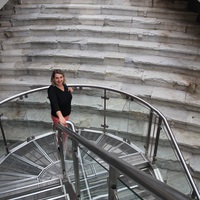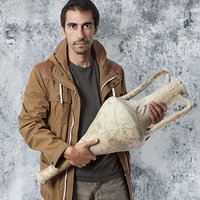
Jan de Boer
Related Authors
Margarit Damyanov
National Institute of Archaeology and Museum, Bulgarian Academy of Sciences
Emil Nankov
National Institute of Archaeology and Museum, Bulgarian Academy of Sciences
Totko Stoyanov
Sofia University "St. Kliment Ohridski"
Despoina Tsiafakis
Research and Innovation Centre “Athena”
Chavdar Tzochev
National & Kapodistrian University of Athens
Anelia Bozkova
National Institute of Archaeology and Museum, Bulgarian Academy of Sciences
Nataliya Ivanova
National Institute of Archaeology and Museum, Bulgarian Academy of Sciences
Gerald Finkielsztejn
Israel Antiquities Authority
InterestsView All (28)









Uploads
Papers by Jan de Boer
northern Amber road from the Baltic met the southern Great Caravan road. During the Late Bronze Age, trade-in metals was an essential aspect of the economy of the Bronze Age world. In the Aegean, raw
copper was mostly traded in the form of the so-called ox-hide ingots and several of such items were found in Eastern Thrace, possibly mined and melted in the Strandzha Mountains. There are strong archaeological indications that metal, mined in Eastern Thrace, was transported over land and the Maritza River to the Aegean world over a long period, in the context of the same existing world system.
northern Amber road from the Baltic met the southern Great Caravan road. During the Late Bronze Age, trade-in metals was an essential aspect of the economy of the Bronze Age world. In the Aegean, raw
copper was mostly traded in the form of the so-called ox-hide ingots and several of such items were found in Eastern Thrace, possibly mined and melted in the Strandzha Mountains. There are strong archaeological indications that metal, mined in Eastern Thrace, was transported over land and the Maritza River to the Aegean world over a long period, in the context of the same existing world system.